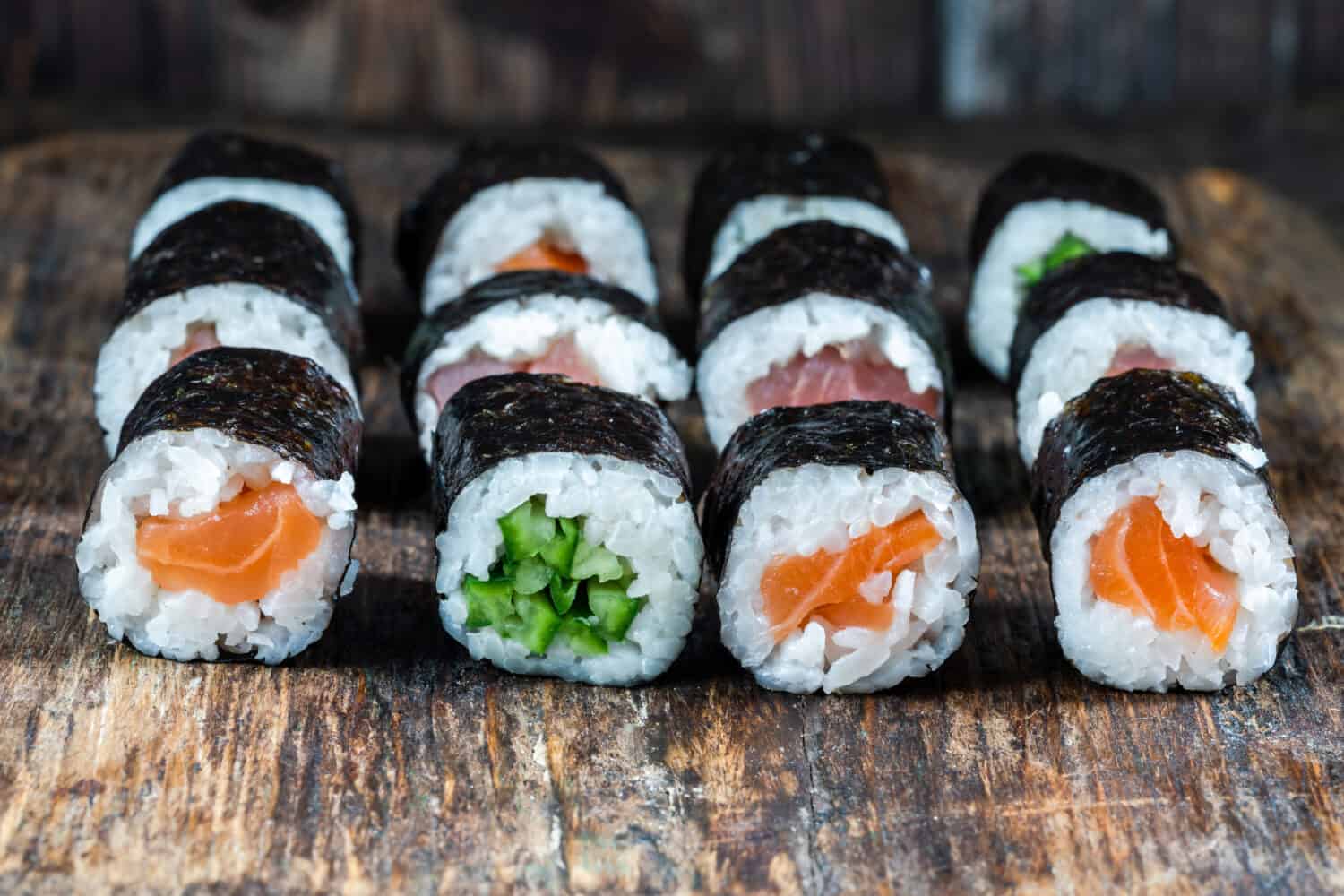To the naked eye, sushi rice and white rice look identical. When you dive into your favorite sushi roll, you may think you're eating traditional white rice. But did you know that sushi rice is a specific type of rice and that it's prepared differently?
The main difference between sushi rice and white rice is the taste and texture. Sushi rice is prepared differently and therefore has a sweeter taste and a stickier texture. White rice, on the other hand, has a very neutral taste and is fluffy instead of sticky.
Beyond the simple look and feel of both kinds of rice, they have several other factors that set them apart. Here's everything you need to know about the differences between sushi rice and white rice.
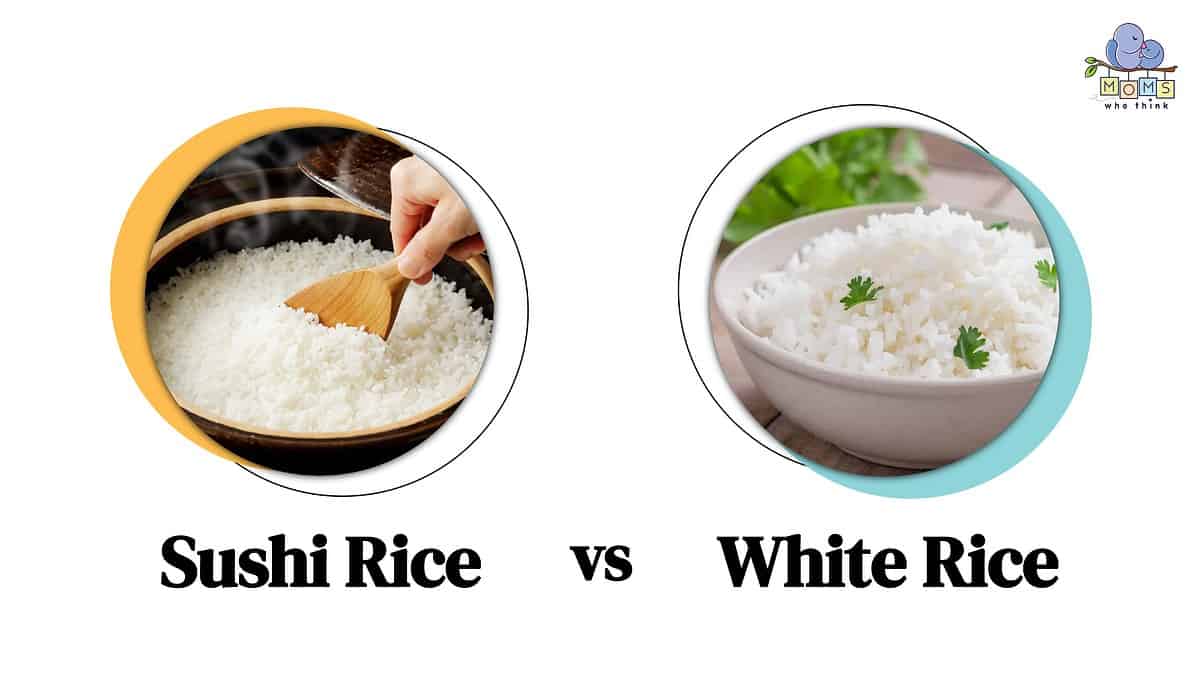
©
What Is Sushi Rice?
Sushi rice is a special Japanese short-grain rice that's a from of white rice used mostly in sushi rolls and related items. This type of rice is also unique in how it's prepared because finished sushi rice has added ingredients like vinegar and sugar. When cooked, it's much stickier in nature as it has a higher starch content. According to the National Library of Medicine, sushi rice has high levels of amylopectin, which is what gives it a higher starch content, making it sticky. The sweeter flavor, on the other hand, comes from the sugar that's added later.
How To Prepare Sushi Rice
Sushi rice is unique because it's prepared with a few added ingredients: Rice vinegar, sugar, and salt. The vinegar aids in giving the rice its signature sour flavor, while the sugar helps to offset the saltiness and add a hint of sweetness. The Food Network also states that these ingredients are to be added to the rice after it's been fully cooked.
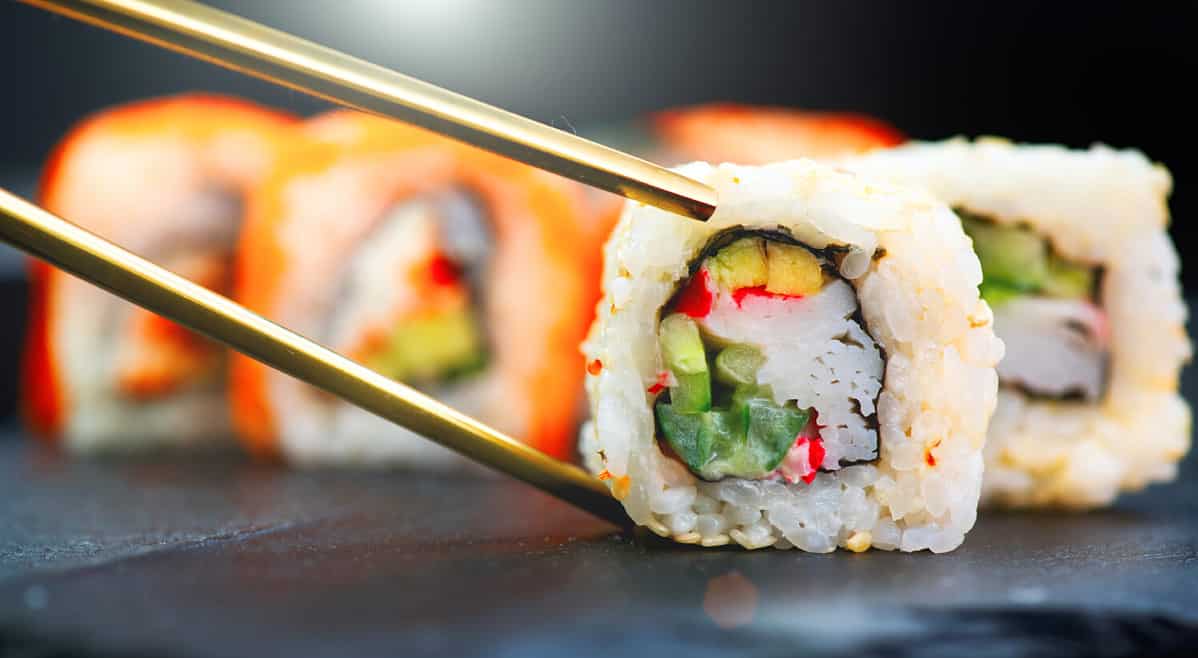
©Subbotina Anna/Shutterstock.com
What Is White Rice?
White rice is typically a generic term for many varieties of rice but is also a highly processed form of rice. When white rice is processed, the hull, germ, and bran are all removed, only leaving the white endosperm. Healthline reports that while this process makes the rice more easily digestible, it also removes many of the grain's nutrients.
Additionally, white rice is popular for its versatility. It's relatively easy to prepare, light and fluffy in texture and is often used as the base for many different recipes.
How To Prepare White Rice
You can find different cooking variations of white rice on the market. “Minute rice” can be prepared in minutes but has gone through an extra process to remove even more nutrients. Regular white rice takes around 25 minutes to prepare but is higher in nutrients. Either type of rice only requires water to be prepared. Its mild flavor allows it to easily absorb other ingredients.
Sushi Rice vs. White Rice: What Are the Differences?
While we know that sushi rice and white rice taste and feel differently, there are other ways these two kinds of rice differ. Here's an in-depth look at all the factors that set these two grains apart:
Grain Type
Before diving into the specific grain type of each rice, it's important to know that there are many different varieties of rice on the market today. Short-grain, the category sushi rice falls into, is often wide in nature and only slightly longer than it is wide. Other variations of short-grain rice include brown short-grain and glutinous rice.
White rice generally falls into the medium-grain category because it's about equal in length and width. When looking for medium-grain rice, you may also find arborio rice, valencia rice, and bomba rice.
The last category is long-grain rice. This type is much longer than it is wide (hence, the name). This is where you'll find basmati and jasmine rice, which can also be classified as a variety of white rice.
Ultimately, sushi rice is always short-grain, while white rice is a broader term that can cover many different varieties.
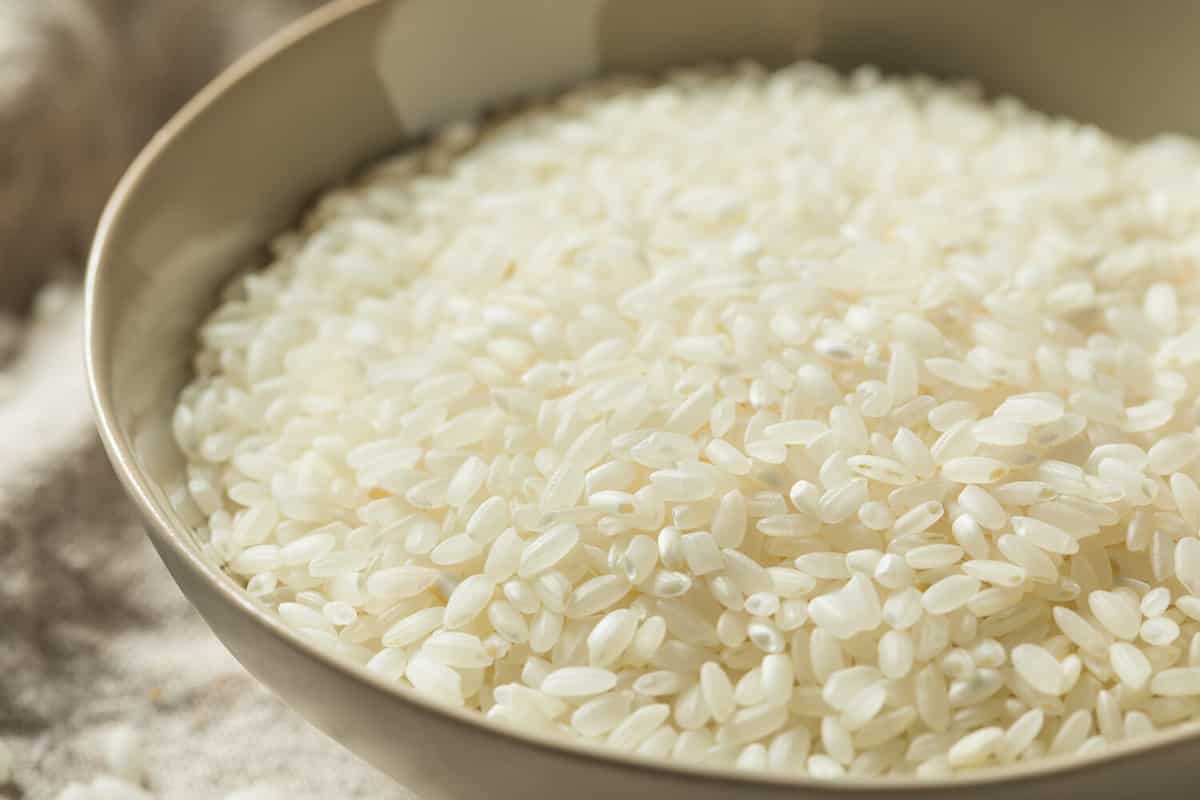
©Brent Hofacker/Shutterstock.com
Origin
According to SushiFAQ.com, sushi rice is often called Japanese rice or sushi meshi. It's a staple crop in Japan and is thought to have been grown and harvested for more than 2,000 years. This type is more specific in how it's prepared with additional ingredients rather than how it's specifically grown.
White rice, on the other hand, has a long history of being grown, harvested, and consumed. This rice has origins dating back to 10,000 years ago in eastern Asia. White rice today has evolved and is thought to have mutated from what it was originally. Science Daily reports that 97.9% of the white rice we eat today came from a mutation in a single gene of rice as the crop spread worldwide.
Taste and Texture
As mentioned, sushi rice is a short grain that has a higher starch content, making this type of rice naturally sticky. However, it's sturdy enough to not become gooey or mushy. When prepared with vinegar and sugar, it also has a slightly sweeter and sour flavor than basic white rice.
White rice is most generally a short-grain and therefore doesn't have the same sticky texture as sushi rice. It's also prepared without additional ingredients, which gives it a mild and neutral flavor.
Culinary Use and Preparation
We know that sushi rice is best used in sushi rolls and poke bowls. Its sticky texture and unique flavor make it specific to these types of dishes and not a great candidate for other basic dishes. Additionally, sushi rice is specific in how it's prepared, which we discussed above.
White rice, however, is incredibly generic and versatile. It can be used as a base ingredient for many different recipes and doesn't require any special ingredients to be added to it after it's cooked.
Sushi Rice vs. White Rice: Nutritional Value
When it comes to nutritional value, sushi rice and white rice are very comparable. Both offer a substantial source of carbohydrates and aren't considered a good source of protein or fat. Keep in mind that sushi rice includes added ingredients as well, so the specific nutritional info may vary depending on the variety and how it's prepared.
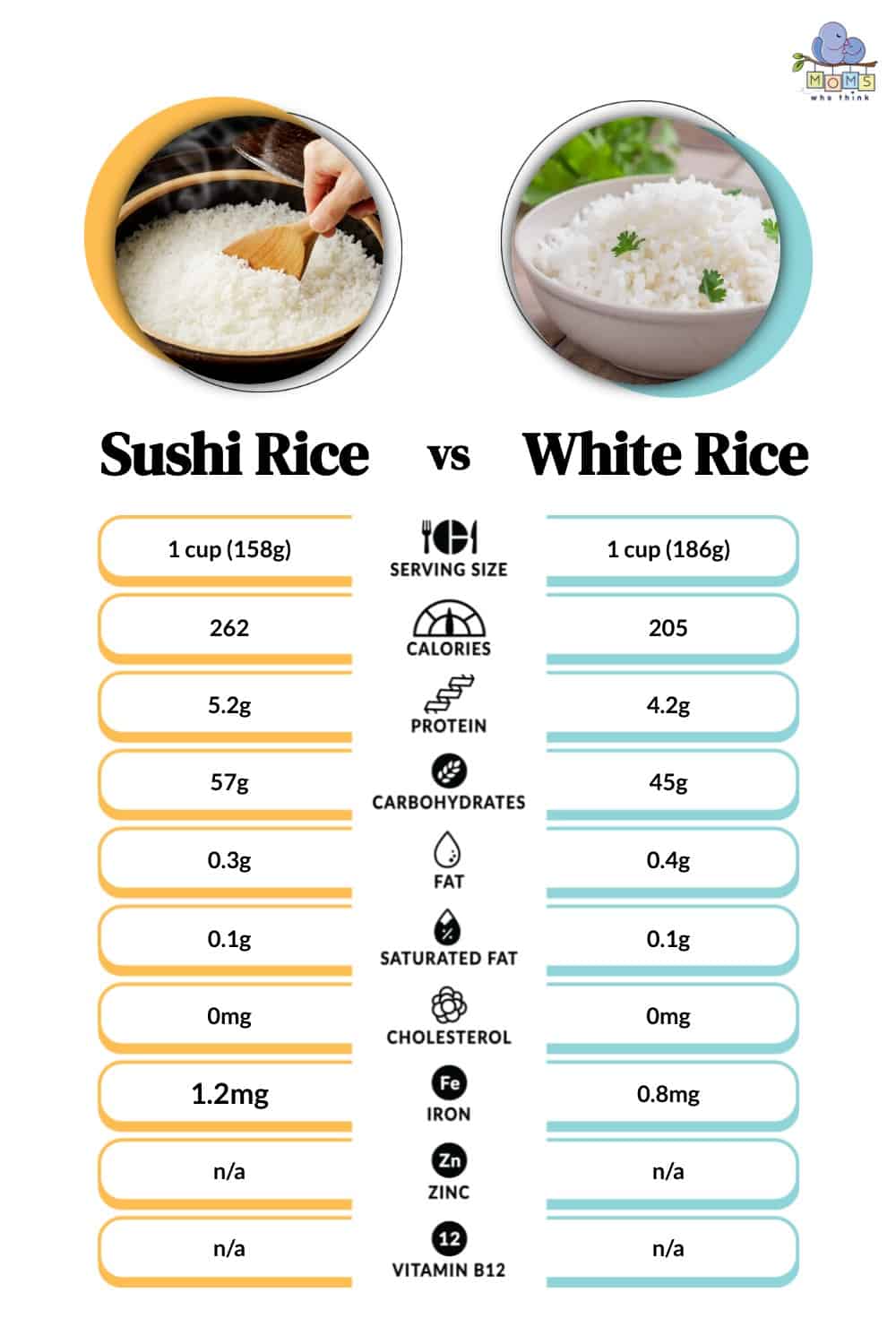
©
Can You Substitute Sushi Rice for White Rice and Vice Versa?
Because sushi rice is special in how it's prepared after it's cooked, you can generally use regular white rice as a substitute. Just keep in mind that it won't be near as sticky so your sushi rolls may not have the texture or form that you were hoping for. If you're looking to make the perfect sushi roll, it's recommended to stick to sushi rice instead of substituting it.
White rice can be used in a variety of different ways, but sushi rice has specific flavoring. Therefore, white rice can often be used as a substitute for sushi rice, but sushi rice isn't always the best substitute for plain white rice.
Best Substitutes for Sushi Rice
If you're in a pinch, you may need other types of rice that will work as a replacement for sushi rice. Here are a few options to choose from:
- Sticky rice, also known as glutinous rice.
- Short-grain white rice, sometimes called pudding rice.
- Brown rice, though it has a nuttier flavor.
- Cauliflower rice, which can be a slightly healthier alternative.
Best Substitutes for White Rice
Because of white rice's versatility, you can use almost any other type of rice as a suitable replacement. Here are a few options to keep in mind:
- Brown rice, which is the most popular substitute and is generally viewed as a healthier option because it hasn't gone through the milling process.
- Cauliflower or even broccoli rice, which offer more nutrients.
- Quinoa, which is a gluten-free option.
- Barley, which is a highly nutritious grain source.
You can also get creative and try red cabbage or zucchini noodles in place of white rice if you're looking for healthy, non-grain substitutes.
Final Thoughts
When it comes to sushi rice and white rice, both have their own unique characteristics. Sushi rice is most widely known for its sticky texture and its sour and sweet flavor that is added to the rice after it's prepared. On the other hand, white rice is more of a general term that covers many different types of rice grains and is known for its neutral and mild flavor. Sushi rice is also best when making sushi, while white rice can be used in numerous ways. Either one is sure to be a delicious addition to your next dish!
Print
Spicy Sushi Roll
Ingredients
- Rice
- Sushi seaweed sheets
- Sushi vinegar
- Fillings of your choice (such as fish, cucumber or avocado)
- Toppings (like seeds or spicy mayo)
Instructions
- Cook the rice following the instructions on the package. Then, let it cool down a bit.
- Season the rice with sushi vinegar.
- Place a seaweed sheet on a mat. Spread a layer of rice evenly over it.
- Add your desired fillings in a line across the center of the rice.
- Top it off with your selected toppings.
- Lift the edge of the sushi mat closest to you. Next, roll it away from yourself while gently pressing to shape the roll.
- Slice into pieces and savor your sushi creation!
The image featured at the top of this post is ©BBA Photography/Shutterstock.com.
